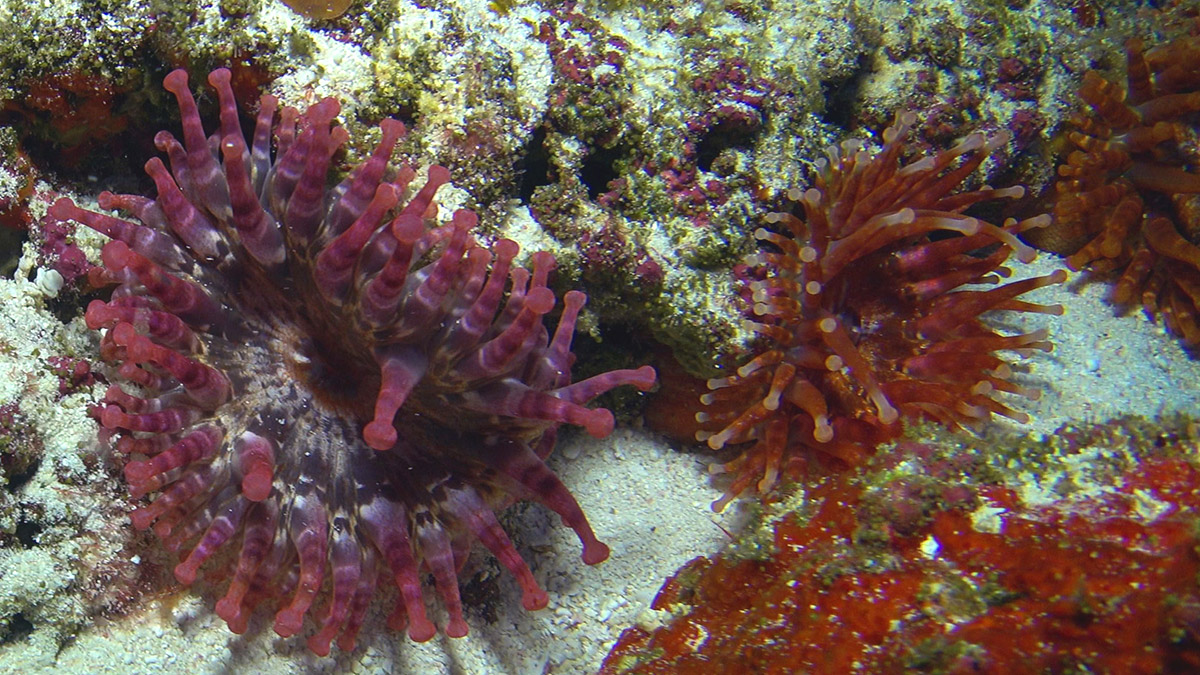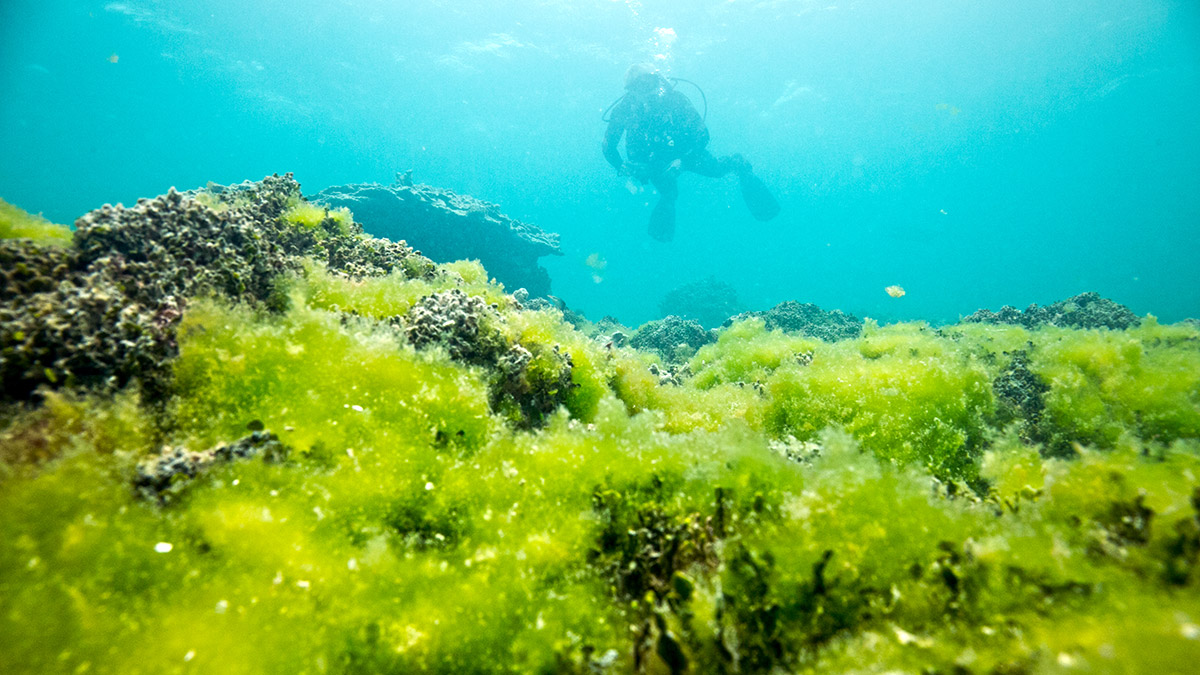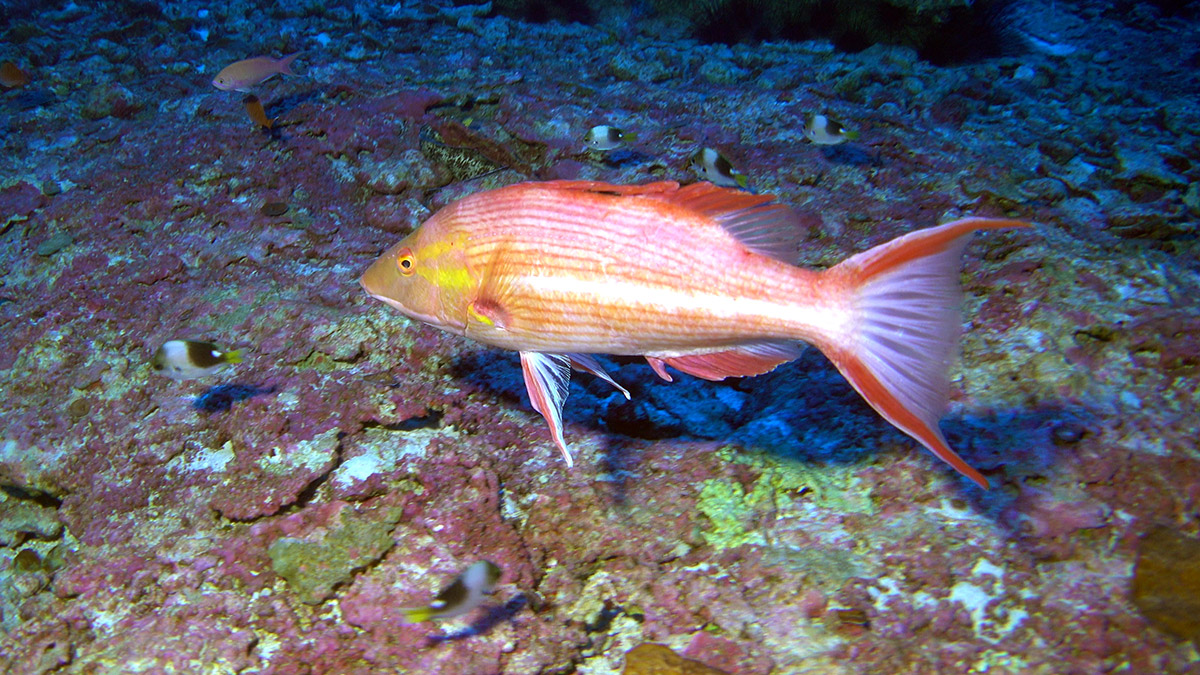FOR IMMEDIATE RELEASE
June 15, 2016
Contacts:
Toni Parras, 808-282-9332
Scientists discover new species, significant coral mortality in Papahānaumokuākea Marine National Monument

Three new species of fish are among the discoveries announced as scientists returned from a 25-day research expedition aboard NOAA Ship Hi‘ialakai to explore the deep coral reefs of Papahānaumokuākea Marine National Monument (PMNM) in the Northwestern Hawaiian Islands (NWHI). Scientists collected specimens of deep-water fishes never before seen by divers and documented significant coral mortality.
“We collected the first specimens of male Hawaiian pigfish in 330 feet of water,” said Randall Kosaki, Ph.D., chief scientist of the expedition and NOAA’s Office of National Marine Sanctuaries deputy superintendent for Papahānaumokuākea. “Males and females have dramatically different color patterns, and prior to this, no males have ever been seen or collected.”
Using advanced dive technology to survey reefs at depths far greater than conventional scuba gear allows, scientists collected two probable new species of fishes, and filmed a third.
“The discovery of new species is surprising, given how thoroughly fishes in Hawaiian waters have been studied,” said. Richard Pyle, Ph.D., an ichthyologist with the Bishop Museum. “This underscores how poorly explored the deeper portions of coral reefs are.”
Researchers also documented significant coral mortality resulting from a mass-bleaching event in 2014. Coral bleaching, or loss of symbiotic algae living within coral tissues, occurs when sea surface temperatures remain elevated above normal levels for extended periods of time.

“Unusually warm temperatures in 2014 resulted in bleaching of up to 90 percent of the corals in very shallow water at Lisianski Island,” said John Burns, Ph.D., of the Hawai‘i Institute of Marine Biology. “In 2015, we documented up to 90 percent mortality of corals due to bleaching there. This year, those dead corals were smothered by a large bloom of green algae.”
Scientists will continue to monitor Lisianski Island coral reefs to help determine if recent observations represent an intermediate stage in recovery rather than a permanently degraded condition.
Researchers also used photogrammetric imaging to produce detailed 3-D reconstructions of coral reef habitats in order to measure structural complexity.
“These 3-D models of deep coral reefs between 200 and 300 feet will help us to understand which kinds of bathymetric features support the greatest abundance and diversity of reef fishes,” said Burns. “3-D modeling of shallow reefs affected by coral bleaching has documented significant losses in structural complexity, meaning these reefs will provide poorer-quality habitat for fishes and other reef organisms.”

The scientific team included researchers from Papahānaumokuākea Marine National Monument with NOAA’s Office of National Marine Sanctuaries, the Bernice P. Bishop Museum, and the Hawai‘i Institute of Marine Biology.
Images and video are available here.
NOAA's mission is to understand and predict changes in the Earth's environment, from the depths of the ocean to the surface of the sun, and to conserve and manage our coastal and marine resources. Join us on Facebook, Twitter, Instagram and our other social media channels.
Papahānaumokuākea is cooperatively managed to ensure ecological integrity and achieve strong, long-term protection and perpetuation of Northwestern Hawaiian Island ecosystems, Native Hawaiian culture, and heritage resources for current and future generations. Three co-trustees - the Department of Commerce, Department of the Interior, and State of Hawai‘i - joined by the Office of Hawaiian Affairs, protect this special place. Papahānaumokuākea Marine National Monument was inscribed as the first mixed (natural and cultural) UNESCO World Heritage Site in the United States in July 2010. For more information, please visit www.papahanaumokuakea.gov.

